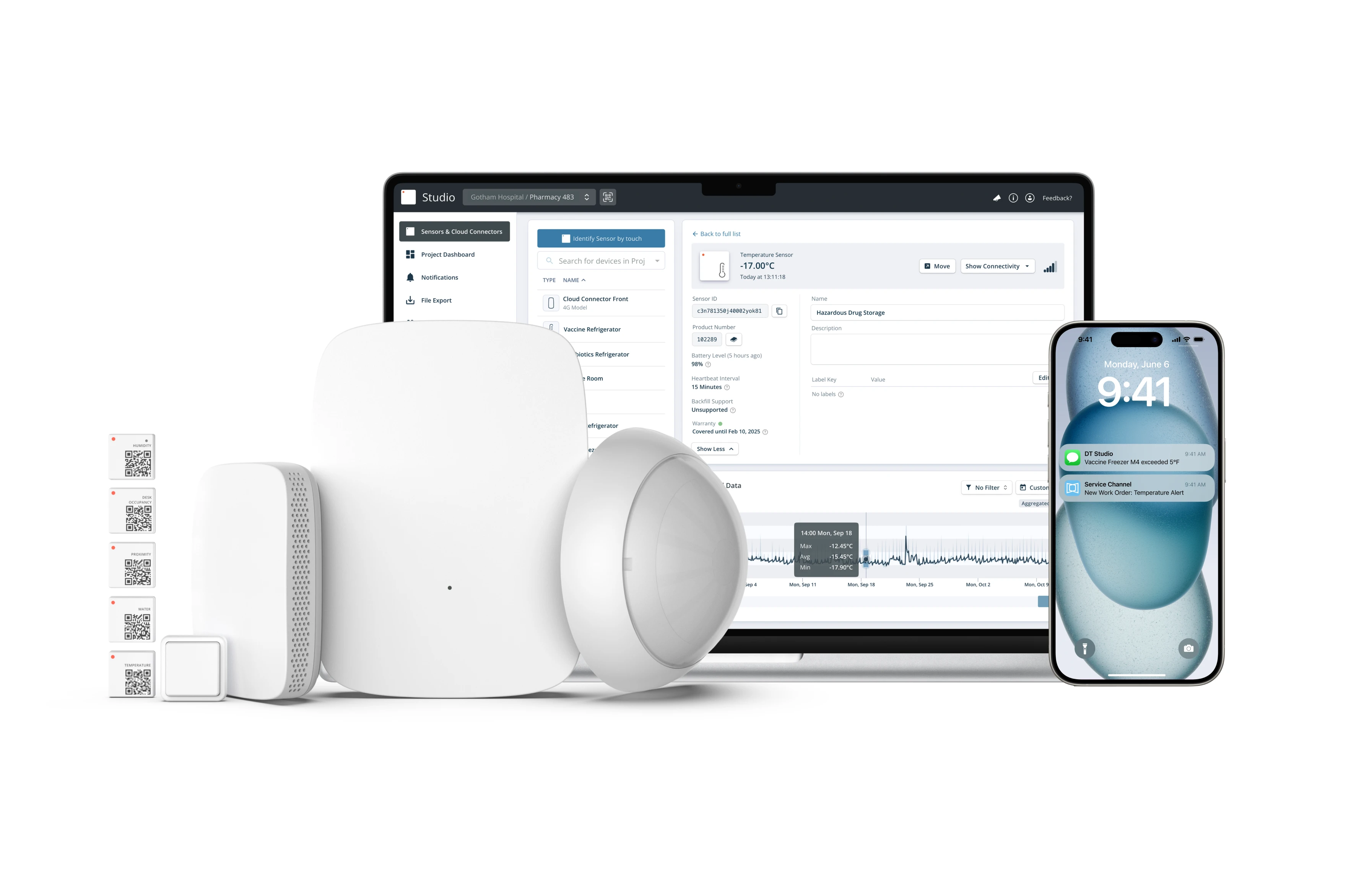5 Key Considerations When Selecting A Temperature Monitoring Technology

In the dynamic business of food retail, maintaining optimal temperature control is crucial for preserving the freshness and quality of perishable goods. With the advancement of temperature monitoring technology, store operations teams now have access to efficient and reliable solutions that go beyond manual monitoring. However, with many options available, selecting the right temperature monitoring system can be challenging.
In this article, we highlight five factors for consideration when choosing a sensor-based temperature monitoring technology for your grocery or convenience store.

How Long Will the Solution Last?
Food retail businesses, e.g., grocery stores, supermarkets, and convenience stores, often have multiple temperature-sensitive areas. While evaluating a sensor-based temperature monitoring solution, store operation teams should understand that the battery life at room temperature does not reflect the actual performance.
Cold temperatures can cause issues that impact battery performance, including reduced capacity, slower chemical reactions, and increased internal resistance. Given this, it is essential to evaluate the battery performance of the sensor at the temperature at which it operates to ensure continuous monitoring without interruption.
Also, replacing the battery might seem like a small task, but repeating this on every device and across store locations can quickly add to the maintenance and labor costs of the total solution. Choosing solutions that offer longer battery life in extreme temperatures lets the system run reliably for a longer period without regular maintenance and ensures extended monitoring durability.

How Easy Is It to Monitor the Data?
Grocery stores must strictly maintain desired temperatures in their cold storages, freezers, and refrigerators, which necessitates constant monitoring to ensure food quality and freshness.
Intuitively, timely intervention is critical when the temperature fluctuates outside the set range. An effective temperature monitoring system should provide real-time data, allowing store operations teams to monitor temperature changes constantly.
Wireless connectivity is an important feature that enables real-time monitoring and remote access to temperature data. The system should be equipped with an effective alert mechanism that can be easily integrated with the work order management system to promptly notify the manager or relevant staff members in case of temperature variations beyond acceptable limits. These alerts ensure immediate action can be taken to rectify the change in temperature, preventing damage to perishable stock and any future equipment failure.
.webp)
How Can I Access the Data?
For constant refrigeration or freezer monitoring, round-the-clock employee attention would be required to note temperatures at different times throughout the day and keep track of the measurements.
Using this data to analyze trends and prepare reports would be challenging, and the result would be prone to human error. While relying on an on-premises system, monitoring and compliance across multiple stores spread geographically would be impossible to perform and rely upon.
In today's modern retail landscape, where store managers oversee multiple locations, remote accessibility and control are indispensable in a temperature monitoring system.
By investing in cloud-based temperature monitoring technologies, staff can gain easy remote access and visibility into data from a single platform across multiple store locations to track temperature trends and identify potential issues. Managers can respond swiftly to deviations, simplify food safety compliance reporting, demonstrate the latter during inspections, and facilitate quality assurance processes.

How Easy Is It to Scale the Solution?
As grocery stores expand their operations or open new locations, the demand for an effective temperature monitoring system increases.
A scalable solution allows for the effortless addition of monitoring points, extending the system's capabilities without replacing the entire infrastructure. This translates into substantial cost savings over time, ensuring comprehensive coverage of the growing store footprint.
Whether it's additional refrigeration units, freezer sections, or cold storage facilities, a temperature monitoring system should seamlessly adapt to the changing needs of the establishment, minimizing downtime and disruptions during expansion. Additionally, easy integration with existing work order management systems can streamline and improve operational efficiency. A system that can grow with the business negates the need for frequent replacements or expensive upgrades when operations expand.

How Accurate and Precise Are the Measurements?
Ensuring precise and accurate temperature measurements is fundamental for an efficient temperature monitoring system. In food storage, even minor temperature deviations can have severe consequences, impacting the products' quality and safety.
In various environments, including cold conditions, temperature sensors are susceptible to experiencing drift over time. This drift, a gradual shift in measurement accuracy, can affect sensors across different temperature ranges. To combat this issue, calibration practices are vital. Calibration doesn't eliminate drift; rather, it enhances measurement accuracy.
Accurate and precise temperature monitoring prevents deviations that could compromise product integrity, ensuring customer satisfaction and reducing financial losses.
Bottom Line
Selecting the right temperature monitoring technology ensures the freshness, quality, and safety of perishable goods in food retail businesses. By evaluating the five essential factors, store managers can make better-informed decisions.
Implementing an effective temperature monitoring system enhances operational efficiency, minimizes losses, and ultimately provides a superior shopping experience for customers.

Temperature Monitoring Made Simple
Get Started






